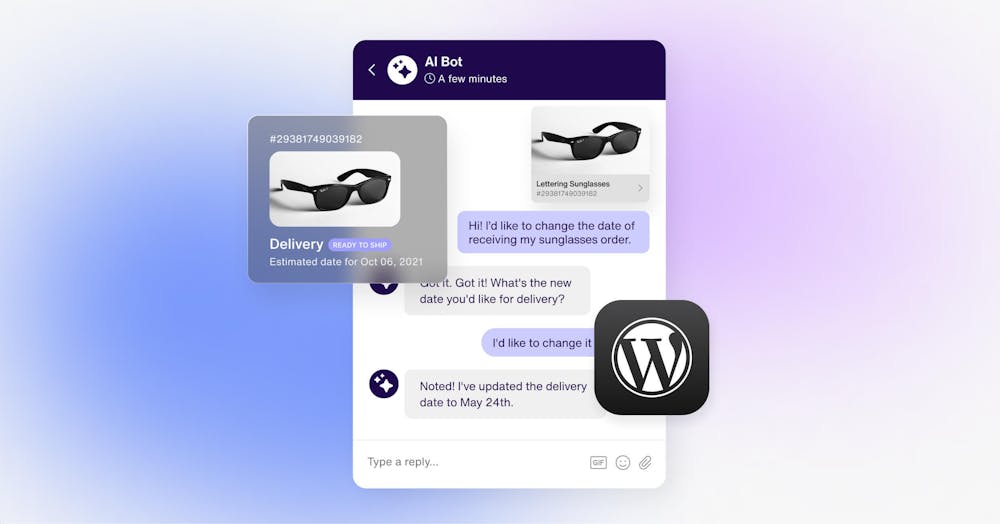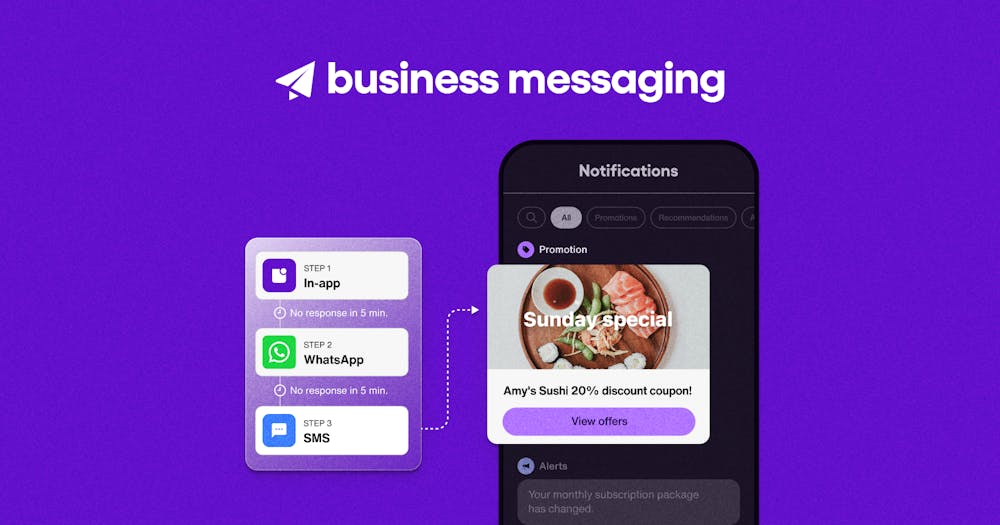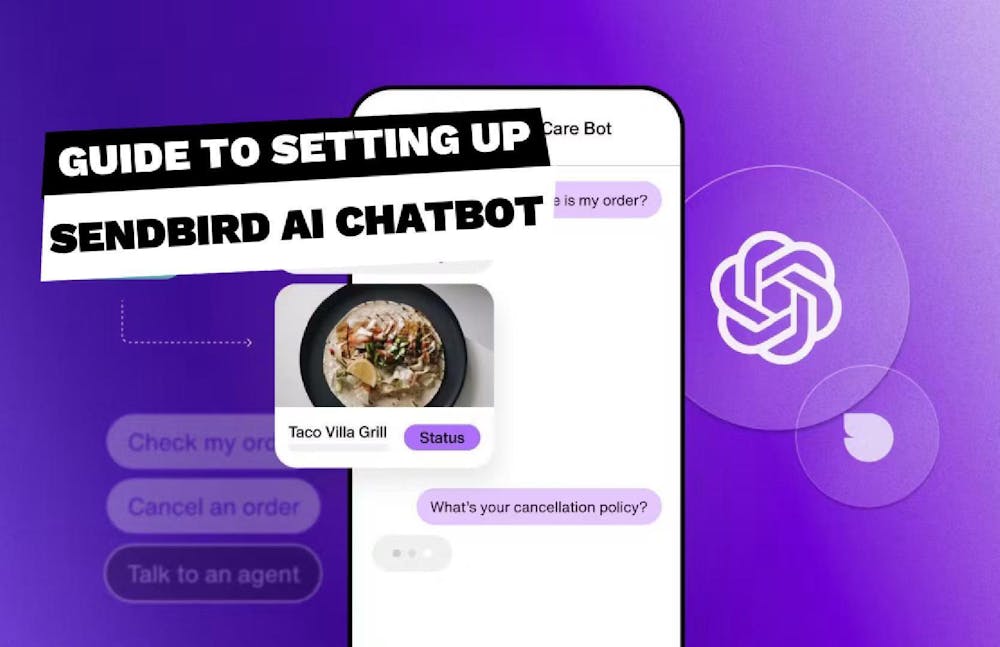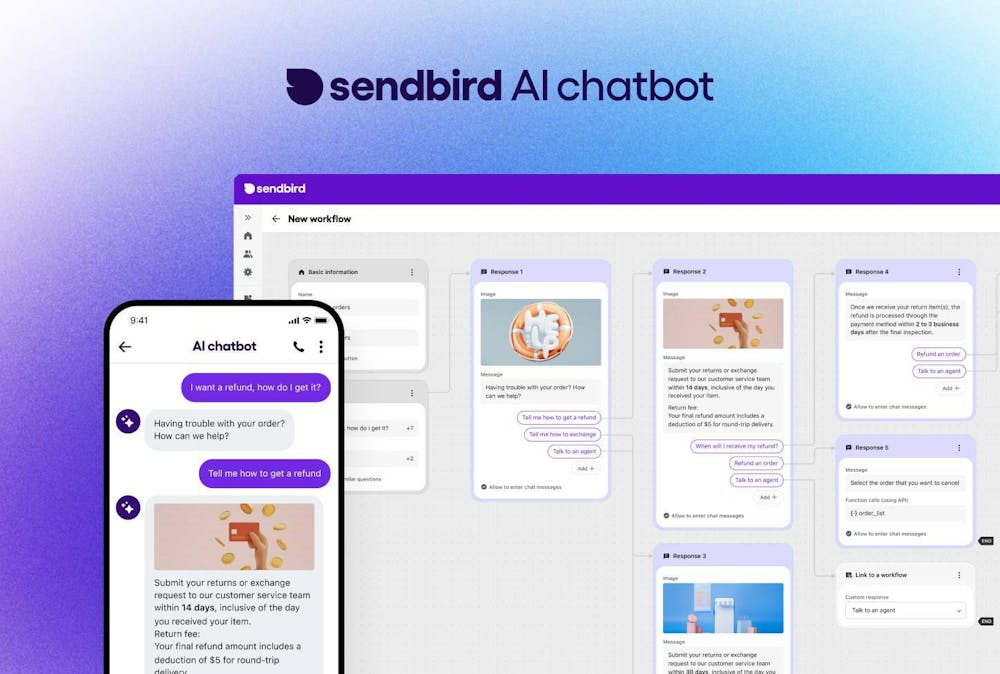Introducing SmartAssistant: Sendbird's new generative AI knowledge bot
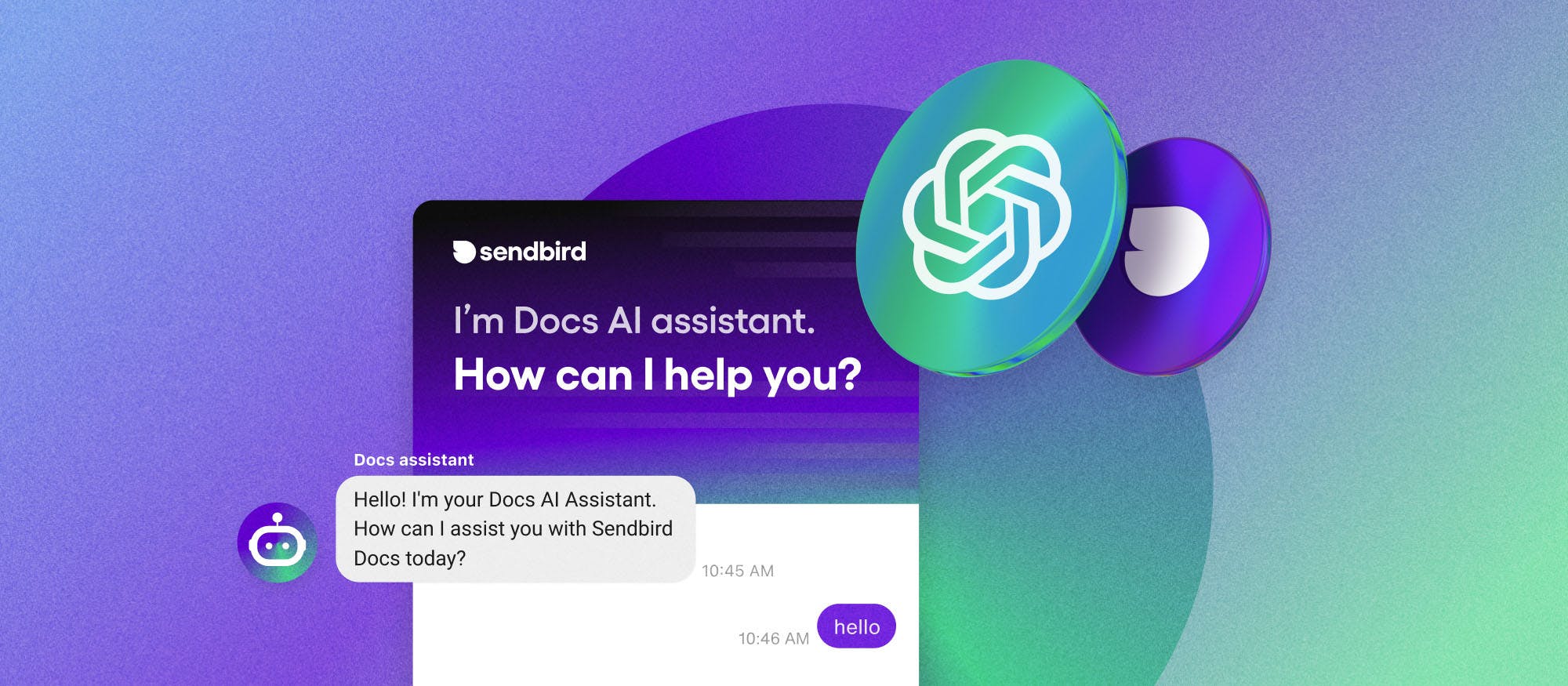
We are thrilled to introduce SmartAssistant, a new AI knowledge chatbot by Sendbird that leverages the revolutionary large language model (LLM) Generative Pretrained Transform (GPT) from OpenAI. SmartAssistant is designed to streamline customer service for online businesses throughout their users’ journey.
SmartAssistant, a next-generation custom AI chatbot, offers the following key features:
Engages in natural conversations using GPT’s generative technology, enabling smooth and human-like interactions.
Provides subject matter expertise and delivers answers to questions on specific business topics on which it's been fed information.
Requires minimal effort and setup from your end to implement and use effectively.
By combining the remarkable conversational capabilities of OpenAI's GPT LLM with first-party data ingestion and prompting, SmartAssistant delivers accurate and relevant answers that can rival the experience only previously achieved by human service agents for engagement, ecommerce, marketing, and support. Before diving deeper into Sendbird's SmartAssistant, let's address a common challenge businesses encounter when using generative AI: hallucinations.

What are generative AI hallucinations?
Generative AI hallucinations, also known as AI-generated hallucinations or AI-generated fabrications, refer to instances where an artificial intelligence system, particularly a generative model, produces content that is not based on factual or accurate information. Hallucinations can occur when the AI system generates responses or outputs that are imaginative, fictional, or simply incorrect, even though they may appear plausible or coherent.
In the context of language models, such as OpenAI's GPT, hallucinations can manifest as the model generating responses that sound reasonable but are not grounded in reality. This can happen when the model encounters a query or prompt to which it doesn't have a specific answer or accurate information. Instead of admitting its lack of knowledge, the model, unaware and unreflective of the content it's producing, may "hallucinate" and generate a response that appears to be factual but is actually fabricated. For example, suppose a language model is asked a question about a historical event that never happened. In that case, it may generate a detailed and convincing but entirely fictional account of that event.
How does Sendbird’s SmartAssistant help you mitigate the risk of hallucinations?
Minimizing AI-generated hallucinations and preventing the negative impact of a poor customer experience is crucial for businesses interested in fostering long-lasting customer relationships based on trust and effectiveness. To address this issue, SmartAssistant offers the following solutions to prevent AI-generated hallucinations:
Contextual prompts
Providing clear and explicit prompts is vital to guide the AI model's responses effectively. SmartAssistant incorporates contextual prompts that include content ingestion from various sources, such as files or web content. These prompts help the large language model (LLM) target relevant and specific content to the business. Businesses can ingest any proprietary information, such as frequently asked support questions’ answers, policies, product information, and so on.

Businesses can also include additional contextual information within the prompts to establish a framework for the chatbot and align it with customer expectations. This enables the AI chatbot to communicate the specific topics it can assist with and what falls outside its scope of expertise. Sometimes, a simple, “I am sorry, but I am not qualified to answer this question,” can go a long way in building brand credibility, trust, and loyalty.
Divulging sources
To mitigate the risk of hallucinations, SmartAssistant offers the source of the information it shares. This transparent approach allows the recipient to verify the accuracy and relevance of the generated response—which many AI or scripted chatbots do not provide. Disclosing the sources establishes accountability for the AI system and the organization deploying it. The traceability of the information helps build trust and a sense of reliability for our customers. This aligns with ethical principles such as fairness, honesty, and integrity.

Generative AI: A paradigm shift for all online conversations
Sendbird, with an extensive reach of over 300 million active users and a presence in over 4,000 web and mobile apps worldwide, caters to three primary types of businesses:
Communities: Platforms like Reddit, Patreon, Hinge, and PUBG, where Sendbird’s chat and video call capabilities facilitate online connections and cultivate a sense of belonging among users.
- Two-sided networks:
Dubizzle or Carousell, for example, connect buyers and sellers in their marketplaces.
DocPlanner and Teladoc, two healthcare platforms, help doctors and patients interact seamlessly.
Staffed businesses: Companies like Virgin Mobile or on-demand services like DoorDash have dedicated resources for digital customer support and utilize Sendbird chat and video APIs to handle customer inquiries.
With conversational generative AI, any online business can now tap into the power of conversations throughout the entire customer journey. Sendbird’s SmartAssistant can:
Share knowledge via a website widget, catering to window shoppers seeking information and self-educating.
Promote and entice prospects with personalized marketing offers.
Conduct sales directly with the chat interface, utilizing structured messages with embedded buy buttons.
Provide effective support to acquired customers effectively by reducing response time and increasing deflection, and resolving queries efficiently, thereby minimizing the need for costly human intervention.
For example, resource-constrained ecommerce websites were previously limited to a browsing experience. However, with ecommerce AI chatbots, they can now deliver a
Conversational
Multilingual
24/7
Global
and scalable
human-like service of unparalleled quality. These AI chatbots have the flexibility to comprehend language nuances and context that surpasses scripted bots. Like how the “search function” revolutionized access to information, generative AI chatbots introduce the emotional element of conversations into the user experience, driving engagement and fostering relationships.
How to experience SmartAssistant’s generative AI knowledge bot
Option 1: Sendbird Chat
Experiencing Sendbird’s SmartAssistant is extremely straightforward if you have already embedded Sendbird Chat into your application. With no code, you can head to the Sendbird dashboard, create a GPT-powered bot, ingest content via a file or a web link, create framework prompts, and include your SmartAssistant in any existing chat channel of your app.

Option 2: Sendbird UIKit for Chat
If you haven’t embedded Sendbird Chat into your application. You can achieve this very quickly by leveraging one of the Sendbird UIKit for React, React Native, iOS, or Android. The Sendbird dashboard includes a feature configuration tool for UIKit to select features you’d like to enable, view the UI, experience the UX, and automatically build the code for your app.

Option 3: SmartAssistant demo
If you want to experience a conversation with Sendbird’s SmartAssistant, you can use our knowledge AI assistant chatbot demo. Provide your email and a weblink, and we will send you a private demo specially trained on the content of your weblink.
You may also head to our docs, where we’ve created a SmartAssistant widget to assist developers with questions regarding our SDK, UIKits, and Platform APIs for chat, voice & video calls, and live streaming.

Embracing the future of digital engagement
With SmartAssistants, online businesses can now harness the power of social interactions through conversations without the need for human resources, a dedicated community, or a two-sided network. Generative AI is leveling the playing field for online businesses by providing a unique way to engage users with knowledge bots that can entertain conversations with human flexibility. The result is a compounding effect of cost reduction through increased efficiency, improved customer satisfaction, and a stronger emotional connection to the brand.
However, controlling generative AI chatbots and minimizing the risk of errors or false information remains a challenge. Businesses can effectively mitigate these risks by utilizing content ingestion, providing clear prompts, and divulging sources.
But this is just the beginning. As new capabilities for fine-tuning and managing structured data become available, SmartAssistants will continue to improve and become even more effective in reducing the need for human intervention while enhancing user satisfaction. So stay tuned for the next version of Sendbird’s SmartAssistant! Meanwhile, start experimenting with AI-powered knowledge chatbots today and revolutionize your customer service experience within minutes by seamlessly integrating chat and SmartAssistants into your application.
Sendbird is the one-stop shop for everything in-app conversations, and LLMs are no exception. For example, Sendbird recently released a new ChatGPT-powered Summarize feature for the Salesforce Connector and continues to invest heavily in AI through both ChatGPT and Google’s PaLM2. For more information about SmartAssistant and the Sendbird conversations platform, please visit our docs, engage with the Sendbird Community, or contact us directly.
Happy AI-powered knowledge chatbot building! 🤖




